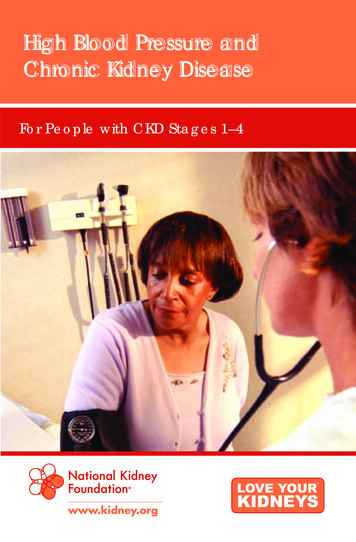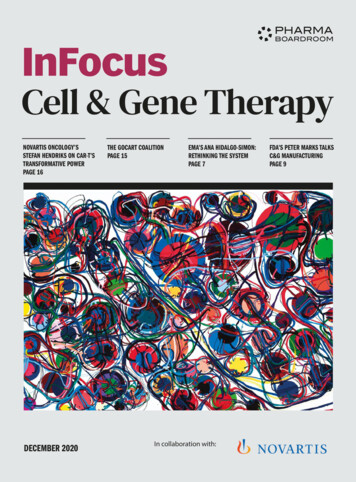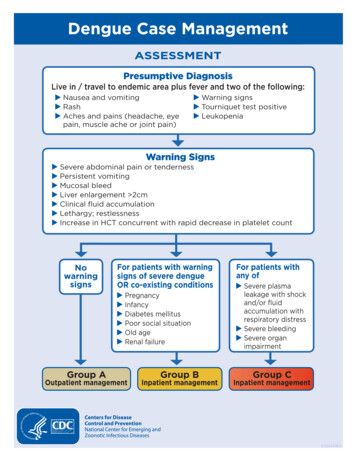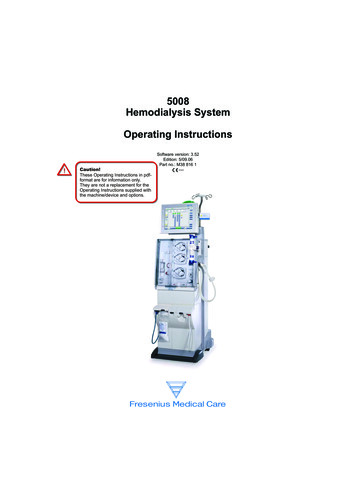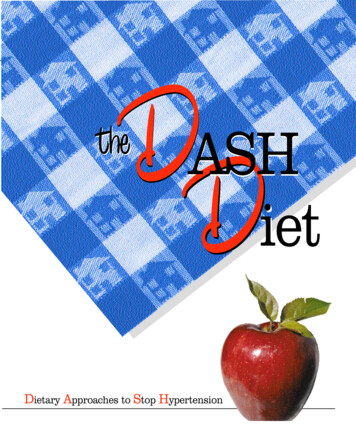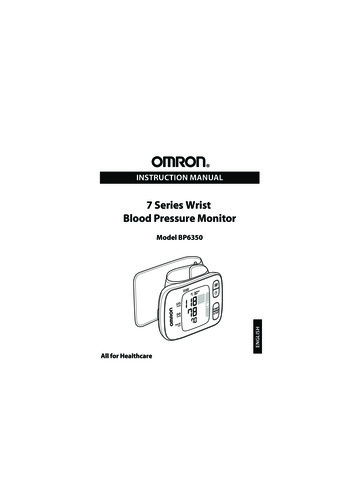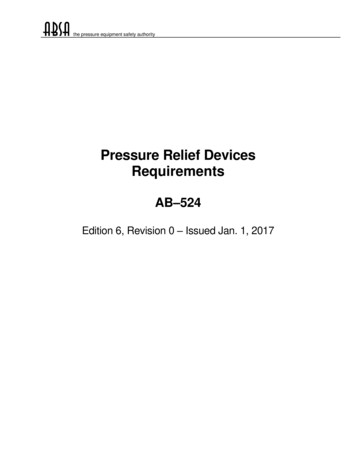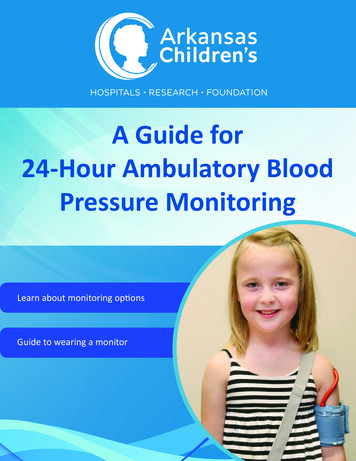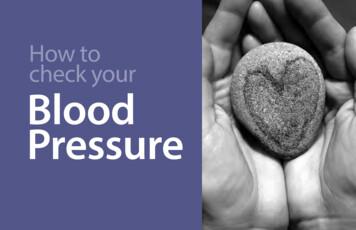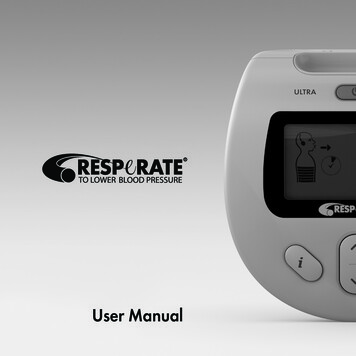
Transcription
COVERLower Blood PressureWithout DrugsHypertensionThe Most Epidemic Medical ConditionKnown to ManByRoger Mason
BLANK
Lower BloodPressureWithout DrugsByRoger Mason
Lower Blood Pressure Without DrugsbyRoger MasonCopyright 2008 by Roger MasonAll Rights ReservedNo part of this book may be reproduced in any form without the writtenconsent of the publisher.1884820-82-49781884820823ISBNLibrary of Congress Catalog Card #2008943289Categories: 1. Health 2.NutritionPrinted in the U.S.A.1st Printing Winter 20082nd Printing and Revision Fall 2011Lower Blood Pressure Without Drugs is not intended as medicaladvice. It is written solely for informational and educational purposes.Please consult a health professional should the need for one be indicated.Because there are always some risks involved, the author and publisher arenot responsible for any adverse effects or consequences resulting from theuse of any of the suggestions, preparations, or methods described in thisbook. The publisher does not advocate the use of any particular diet orhealth program, but believes the information presented in this book shouldbe available to the public.All listed addresses, phone numbers, and fees have been reviewedand updated during production. However, the data is subject to change.Square 1 PublishersThe information contained in this book should not be considered medical advice. The ideas, expressed herein belongsolely to the author, who is not a medical doctor. Except as otherwise noted, no statement in this book has beenreviewed or approved by the Food and Drug Administration2
ContentsChapter 1:About Hypertension7-10Chapter 2:Diagnostics11-16Chapter 3:Insulin Resistance is the Key17-20Chapter 4:Whole Grains: The Staff of Life21-24Chapter 5:Diet, Diet, Diet25-30Chapter 6:Obesity is Basic31-34Chapter 7:The Minerals You Need35-42Chapter 8:Effective Supplements43-48Chapter 9:The Low-Sodium Myth49-52Chapter 10:Temporary Supplements53-54Chapter 11:Omega-3 Fatty Acids55-58Chapter 12:You Must Exercise59-62Chapter 13:Your Basic Hormones63-70Chapter 14:Hormone Testing71-74Chapter 15:Heart and Artery Disease Review75-80Chapter 16:Bad Habits81-84Seven Steps to Natural Health85Other Books by Square One863
BLANK4
About This BookThis book is the most researched, comprehensive, factual andeffective book in print on lowering blood pressure in print. Here youwill find endless scientific, international, published clinical proof ofeverything you read. The vast majority of books on hypertension aresimply full of misinformation. You don’t lower blood pressure bycovering up the symptoms with toxic, expensive drugs having seriousside effects. These poisons shorten your life, and hurt the quality ofyour life.Using natural medicine, you treat the very cause of your problems with diet and life style. Diet and life style cure disease. Diet andlife style lower your blood pressure. Diet and life style are the onlyreal cure. Diet, proven supplements, natural hormones, exercise,weekly fasting, refusing all prescription drugs and medical treatments,and ending any bad habits (like coffee) is the only path to wellness.Americans have the highest blood pressure levels of anyone.This is not merely due to stress. The key to understanding high bloodpressure more than anything else is insulin resistance. Here our insulin loses effectiveness. The main cause of this is our extreme consumption of various sugars. Americans, on the average, hog downover 160 pounds of various sugars every year. Other major factorsinclude obesity, lack of exercise, excessive fat and protein intake, andalcohol use. We are overfed and undernourished.Essential hypertension is the most prevalent medical condition on the face of the earth. Over 65 million- one third- ofAmerican adults have high blood pressure, defined as 140/90. Over40 million more are “pre-hypertensive”- defined as pressures over120/80. Anti-hypertensive drugs are the third most commonprescriptions written. These toxic dangerous drugs simply make youworse. One third of all American adults suffer from high bloodpressure, and many of them go undiagnosed. Cardiovascular heart disease (CHD) is the biggest killer of all world-wide. This epidemic iscompletely unnecessary.This book is based on the last twenty years of internationalpublished clinical research. Everything you need to know is in thisfactual, easy to read book. Be your own doctor, and take responsibility for your health.5
Chapter 1: About HypertensionHigh blood pressure is the most epidemic disease on earth barnone. No other medical condition approaches essential hypertensionin numbers. In America alone there are over 100 million adults withpre-hypertension, or outright hypertension. This is classically definedas 140/90 readings, and pre-hypertension as 130/85. You have to gobeyond these readings and know other parameters. Total cholesterol,triglycerides, uric acid, CRP, homocysteine, blood sugar, GTT, albumin, creatinine, SGOT, SGPT, and bilirubin are the twelve mostimportant ones.Age is the most important factor of all, because everyone getsold- if they’re lucky. There is a direct correlation between age andincidence of hypertension. The older you get the higher your pressures generally. In developed countries, however, we are finding moreand more problems with younger and younger people. Just as we arefinding increasing problems with obesity, diabetes, high cholesterol,and other such problems usually associated with age, we are nowfinding hypertension even in children and adolescents.Surprisingly, you will find high blood pressure levels even inthird world countries. This includes rural areas, where you wouldleast expect it. A good example is the rural Nigerian people, who havelittle obesity, diabetes, or cholesterol problems, and smoking andcoffee are not regular habits. Thirty percent of Nigerian adults arehypertensive, even though, ironically, they have a very low incidenceof CHD (cardiovascular disease). This is more proof we cannotreduce the problem down to stress, since there is usually little stress insuch rural people.You’ll find in this book the main cause of hypertension isinsulin resistance. Here, the body cells no longer respond well tonormal amounts of insulin. This is basically caused by our outrageous intake of over 160 pounds of various simple sugars every yearmore sugars per capita than any other country eats.6
Second to blood sugar dysmetabolism are various kidney conditions and dysfunctions. These are basically caused by our intake oftwice the protein we need, nearly all of which is animal, not plant,protein. Excessive added table salt adds to this problem, but is highlyoverrated as a cause. One-in-three American adults are now clinicallyobese, and obesity is a very powerful direct factor. Minerals are vitalhere, too, as we are very mineral deficient. Overfed and undernourished. The liver is also involved in blood pressure regulation.University Hospital in Switzerland found that kidney problems startas micro-albuminuria, then progress to clinical proteinuria, to progressive chronic renal failure, to outright kidney disease.The liver is our largest internal organ (technically our skin isour largest organ), and controls blood sugar by the release of glycogen into the blood. Liver problems are also strongly associated withblood pressure. SGPT, SGOT, and bilirubin levels are routinelychecked during any comprehensive blood analysis. Liver problemsare far too common in America due to three factors, 1) our 42 percentintake of saturated fats, 2) our overconsumption of alcohol, and 3) ourinordinate intake of prescription and recreational drugs. City Hospitalin England found hypertension clearly associated with elevated liverenzymes and fatty liver. The Affiliated Hospital in China found lowbilirubin levels in hypertensive people.Obesity is a pillar of hypertension, and most patients are overweight. One-third of American adults are obese. You must lose weightto lower blood pressure. Americans eat twice the food they need. Weliterally eat for two people every day. Men only need about 1,800daily calories, and women only about 1,200. That’s all. Calorie restriction greatly improves blood pressures, not only through weightloss, but by less oxidative stress from overeating. The University ofColorado found low calorie diets (from low fat foods) lowered bloodpressure in people with no other lifestyle changes.Oxidative stress is also a major factor, where excessive freeradicals cause damage to the entire body. We get almost no exerciseanymore, and you must exercise to cure any kind of coronary or bloodsugar condition. The answer to oxidative stress is better diet, fewer7
calories, regular exercise, and proven supplements- especially antioxidants. Oxidative stress can be measured by MDA (malondialdehyde)or TBARS (thiobarbituric acid) blood levels, but this is not necessaryat all. Seoul University in Korea found poor antioxidant status (TAS)and oxidative stress to be basic causes of high blood pressure, andcorrelated strongly with obesity. Doctors at the University of Montreal discovered the development of insulin resistance, the model ofhypertension, was found to be prevented by chronic antioxidant therapies. Oxidative stress is a major pathogenic factor in hypertension.Most all doctors recommend one of five classes of dangerous,toxic drugs that cover up a symptom, and make your health worse.This ever changing array of pharmaceutical poisons includes diuretics, beta blockers, ACE inhibitors, angiotensin II receptor antagonists, and calcium channel blockers. Tens of billions of dollars of thesetoxins are sold worldwide every year, especially in America. This parade of dangerous chemicals changes constantly, and popular onesdisappear, while new ones are promoted as the “Magic Answer” tohypertension. One is far better off doing absolutely nothing, ratherthan taking these. They falsely trick the body into lowering pressures,and do not add to quality or length of life. Quite the opposite!We will not discuss hypotension, or low blood pressure per se,for various reasons. This is very rare compared to high blood pressure. There is almost no research in the international clinical literatureon this condition. The bottom line here is that you can cure low bloodpressure the very same ways as high blood pressure. Diet, exercise,supplements, hormones, fasting (if possible), no prescription drugs,and ending or limiting any bad habits should cure this in six monthsor less. If someone has a weak heart, or is very elderly, the results willbe much less of course.America and Japan are the most stressful countries in the world,but this simply does not explain our current epidemic. Happy peoplehave lower blood pressure. Healthy people have lower blood pressure.Happy marriages make for lower blood pressure. Loneliness isstrongly associated with hypertension, and many people are lonely,especially the elderly, widowed, and divorced. Happiness and satis8
faction with your job or vocation are also factors. Owning a pet,especially a dog, means lower blood pressure. People who go tochurch regularly, and are spiritually minded, have lower bloodpressure. Psychological and emotional issues of all kinds also raiseblood pressure. It’s not just stress.Hypertension does not merely mean poor quality of life andearly death. Many, many medical conditions are associated with it.Heart disease is the biggest killer of all by far. Hypertension exacerbates any heart or artery problem. Hypertension predisposes one to anendless litany of diseases, such as various cancers and diabetes. Somestudies have shown it is the major cause of erectile dysfunction (ED)in men. Haya Hospital in Spain found a very high incidence of ED inhypertensives. It contributes to Alzheimer’s, senility, mental decline,loss of memory, sleep disorders, lack of energy, poor cognition andother problems as we age. At Kuwamizu Hospital in Japan sleep disorders were correlated with hypertension, Metabolic Syndrome, andinsulin resistance. The National Institute on Ageing links dementia asdirectly correlated with higher blood pressure. The Third NationalHealth and Nutrition Survey found that the higher the blood pressurethe poorer the cognitive performance in people over 60.Political correctness tells us there are no differences betweenthe races other than skin color. Scientists, however, know there arecountless biological and psychological racial differences. People ofAfrican heritage in America, but not in Africa, have epidemic rates ofhypertension, diabetes, heart disease. prostate cancer, breast cancer,and other conditions. Latinos in America are more susceptible to insulin resistance and subsequent hypertension, but not in their nativecountries. All these factors lead to shorter life spans for people ofcolor. To deny racial differences means these people will not get thecare and treatment they need, nor the preventive measures to avoidthese unnecessary health conditions.High blood pressure is the most prevalent medical condition onearth, while the causes and cures are all too obvious. This is an unnecessary epidemic.9
Chapter 2: DiagnosticsHow do we diagnose this? How do you know if in fact youreally have hypertension or pre-hypertension? What markers are mostimportant? Certainly the most important and basic test is simply one’sdiastolic and systolic blood pressures. If you are over 90 diastolic or140 systolic, these are the accepted cutoff points. 90/140 is the MagicNumber. Of course, you would really rather be looking at levels ofmore like 120 over 80. Pre-hypertension occurs when you get to alevel near 130 over 85. If you are pre-hypertensive, always rememberthat an ounce of prevention is worth a pound of cure. Be proactive,and do something about it.There are other important tests. Your blood sugar level is vitalhere. Know your fasting blood sugar level. This should be 85 or less.Do not accept the usual limit of “100 or less”, from the medical conglomerate, no matter what your doctor tells you. It is an establishedfact that sickness and mortality increase with any blood sugar levelover 85. You can get an inexpensive and accurate home blood sugarmeter at the drugstore for 10. The problem here is that some peoplehave a normal blood sugar level, but are still insulin-resistant. If yourlevel is over 85, definitely get a safe, accurate, inexpensive glucosetolerance test (GTT). The GTT is the Gold Standard. You test yourblood sugar, drink a measured 75 g cup of glucose solution, wait twohours, and test your blood sugar again. It should be 10 points underthe accepted Western level. Not the level the doctor will tell you.Anything over this indicates insulin resistance. The GTT is the goldstandard here, and is very underutilized. Even if your fasting glucoseis 85 or less, you really should still get this inexpensive test done. TheHbA1c test is excellent, and can show your blood sugar average overthe past three months. You should have a level of 4.6% or less. Thisequates to a blood glucose level of 85. You really don’t need this testunless you are diabetic, pre-diabetic, or suspect you are diabetic. Youcan find inexpensive H1ab tests in drugstores on the Internet withouta doctor. This six month blood glycation average is very reliable.10
Test your total cholesterol (TC) and triglycerides (TG). HDL(high-density) and LDL (low-density) levels are also useful, but not asnecessary. Your TC and TG are far more important. Your total cholesterol is the best indicator of all for heart and artery disease in general. Some studies show good correlation of high TC and hypertension, and some don’t. You must test your total cholesterol every year.Inexpensive home tests are available on the Internet as well. Yourtotal cholesterol should be about 150 or less, not 200 or less as you’recommonly told. Mortality and sickness increase with any level over150, and especially over 200. American adults test at about 240, andthis is why heart disease of all kinds is so prevalent. This applies to alltypes of coronary heart disease. You must keep your level around 150for optimum health. Yes, this is a practical ideal, and billions of ruralAsians and Africans prove it. They have only a fraction of the CHDconditions we do. However, if they move here and adopt the Westerndiet, they get just as much or more heart and artery disease. High totalcholesterol is basically due to intake of saturated animal fats from redmeat, poultry, eggs, and dairy foods. Cholesterol is only found inanimal products. The best way to keep your cholesterol down is toomit or limit your intake of these. You can eat 10 percent seafood ifyou like.High triglycerides are far more important here. Science agreesthat triglycerides are a basic indicator of hypertension and CHD ingeneral. Your triglycerides should be 100 or less. Mortality and sickness increase with any level over 100, especially diabetes and otherblood sugar disorders. High triglycerides are one of the very basicsigns of hypertension. High levels are generally due to excessive intake of any simple sugars including fruit juice, honey, dried fruit,white sugar, and others. This includes sugar substitutes such assucralose and stevia. All simple sugars have the same effect, and honey is simply no better than white sugar. High TG is not due to fat intake like cholesterol is. Nearly all vegetarians have excessive intakeof simple sugars, with resulting high TG levels. Your TG level mustbe less than 100. Limit your simple sugars intake and you’ll do fine.If you are over 40, it’s a good idea to get your C-reactiveprotein (CRP) tested. This is an excellent and accurate marker of11
coronary heart disease (CHD) and chronic inflammation. High CRP isvery clearly correlated to high blood pressure, and should be 0.1 to0.3 mg/dl. The researchers of the world are in agreement that CRP is areliable marker of blood pressure. Sungkyunkwan University in SouthKorea found there was a significant positive association betweenblood pressure and CRP. At the famous Brigham Hospital in Bostonthey found that CRP levels are associated with the future development of hypertension. This suggests that hypertension is part ofan inflammatory disorder. Even children now suffer from high bloodpressure. At the University of Wittten in Germany doctors said obesechildren demonstrated significantly higher levels of CRP compared tonon-obese children. The Shenzhen Hospital in China stated thatplasma CRP level was positively correlated with glucose tolerancedegree in essential hypertension patients.Homocysteine (Hcys) is also a very accurate marker of CHDevents, but is not as strong an indicator of high blood pressure. Theevidence here is sometimes conflicting, but the positive studies farout-weigh the negative. The bottom line is that Hcys is a very basicand vital marker for heart and artery health in general. You shouldstill keep your Hcys level under 10 mmol, and preferably well under10. You should still get this tested to know the status of your heartand artery health. At Shanxi Hospital in China (Zhonghua Laonian v8, 2006) they clearly saw, “A positive relationship was found betweenpulse pressure and homocysteine. This relationship remained after adjustment for classical essential hypertension risk factors”. At thePreventive Medical Center in Japan (Hypertension Research v 29,2006) they said, “These data suggest that high plasma homocysteineis associated with increased systemic arterial stiffness, which may enhance blood pressure”. At Affiliated Hospital in China (Shandong Yiyao v 46, 2006) they found, “In conclusion, the attack of hypertensioncomplicated by ischemic stroke in old patients had a relationship withthe increase in plasma homocysteine”. They suggested vitamin supplementation instead of drug therapy. At General Hospittal in Taiwanthey concluded that hypertensive subjects had higher fasting plasmaHycs concentration and insulin resistance. Some studies have foundno relationship. This is irrelevant in that Hycs is a proven diagnosticmarker for CHD, in general. Even if Hycs is not a completely reliable12
tool for hypertension, it is a time proven one for over-all heart andartery diseases. This is a very important diagnostic tool. The famousFramingham Study found (Hypertension v 42, 2003) no major relationship with blood pressure. Another review of the FraminghamStudy (Clinical Chemistry v 41, 2003) said it was, “unproven”.Uric acid is very important. Only 15 percent of our blood uricacid is caused by the purines in our food, while 85 percent is endogenous and made by our bodies. Your level should be under 5 mg/dl.Animal foods promote uric acid due to animal proteins and saturatedfat. Alcohol definitely promotes uric acid production. Our excessiveintake of beef, pork, lamb, chicken, turkey, eggs, dairy products of allkinds, and organ meats causes high blood uric acid levels. You caneat fish and seafood in moderation (10 percent of your diet) if you sochoose. High uric acid comes from eating animal foods, not purines.Vegetarians simply don’t have this problem. Have you everheard of a vegetarian with gout or high uric acid levels? Lacto-ovo“vegetarians” who eat diary and/or eggs, yet call themselves “vegetarians” do have higher uric acid levels, even though there are nopurines in dairy products or eggs. High uric acid is associated notonly with gout (the most painful form of arthritis), but many otherillnesses. You definitely want low uric acid levels. There is no uricacid in plant foods; the problem is caused by the proteins and fats inanimal foods. This is why you limit fish and seafood to 10 percent ofyour diet if you don’t want to be a vegetarian.People in the highest quarter (quartile) of blood uric acid havethree times the CHD death rate, compared to those in the lowestquarter. People in the highest quartile have over twice the all-causemortality of those in the lowest quartile. Low uric acid is your ideal,and you can only attain this by avoiding or limiting meat, poultry, andeggs. All dairy foods must go. At Osaka University (EuropeanJournal of Epidemiology v 18, 2003) the doctors concluded, “Theseresults indicate that high serum uric acid level is closely associatedwith an increased risk for hypertension, and impaired fasting glucoseor Type II diabetes”. At the Institute for Cardiology in Poland thedoctors there found hypertensive patients showed increased serum13
uric acid levels and a higher incidence of hyperuricemia. The sameresults were found in Tottori University in Japan, Shangxi MedicalUniversity in China, Hiroshima University in Japan, Baylor Collegein Texas, and many other hospitals and clinics around the world.At the University of Verona in Italy (Metabolism, Clinical andExperimental v 45, 1996) they found an astounding 88 percent ofhypertensive subjects had high blood uric acid! This is stunning. Atthe Moscow Meditsina Klinicheskaya, 79 percent of hypertensiveshad high uric acid. At the National Cardiovascular Center in Japan(American Journal of Hypertension v 15, 2002 patients were put on ahealthier diet, which caused them to lose weight and lower their uricacid levels. This, of course, resulted in impressive reductions of theirsystolic and diastolic pressures. The famous Bogalusa Heart Studyshowed high uric acid levels were clearly and strongly correlated withhypertension, even in children. The most impressive of all is theFramingham Heart Study. This is the longest and largest CHD studyin history. The researchers there concluded, “In summary, serum uricacid level was an independent predictor of hypertension incidence ”Since the kidneys are so central to blood pressure regulation,there are two very important tests that diagnose kidney function.Creatinine (not to be confused with the amino acid creatine) is a verygood indicator of kidney health. Values vary from lab to lab. If therange is, say, .8 to 1.3 mg/dl for men over 60, and .6 to 1.2 for womenover 60, then you want to be right in those narrow ranges. There areno kidney specific supplements, so the answer here is a low-proteindiet with no meat, poultry, eggs, or dairy, and only 10 percent seafoodif you wish. Salt should be moderated, and high salt foods likepickles, salted chips, olives, etc. should be avoided. There is no reason to go on an ultra low salt diet, as explained in Chapter 9: The LowSodium Myth. You still must avoid excessive use of table salt.A good kidney test to use along with creatinine is albumin(protein) in the urine, known as microalbuminuria. Albuminurea ishighly correlated with arterial pressures. This is called urinary albumin excretion or UAE. It is tested by collecting urine for a period oftime, such as 8 hours. Any reading more than 15 mcg per minute is14
considered proof of excessive excretion. There is a spot test whereany reading over 30 mcg per liter is evidence of damage. This showskidney damage and is known as “incipient nephropathy.” At the University of Insubria (American Journal of Hypertension v 14, 2001)they said, “In conclusion, in never-treated hypertensive patients, microalbuminurea is not only associated with greater myocardial mass(enlarged heart), but is also related with preclinical impairment of LV(left ventricle) diastolic function”. At the University of Pisa theyfound that microalbuminurea, accompanied by evidence of subclinical inflammation, is a strong correlate of metabolic abnormalities inessential hypertension. This identifies a patient subset at very highcardiovascular risk. At Sungkyunkwan University in South Korea,they stated albumin and CRP were significantly higher in the hypertensive patients. At Brazil’s Federal University, they found UAE ratescorrelated positively with systolic doctor’s office blood pressuremeasurements and ambulatory blood pressure. Kidney problems arecaused by excess animal protein in the diet. This can only come frommeat, poultry, eggs, and dairy consumption. Excess salt intake alsostresses the kidneys, forcing them to constantly excrete the excesssodium to maintain the vital sodium-to-potassium balance. Hypertension is usually related to weak and damaged kidneys. These are thepeople who are salt sensitive. It is not sodium chloride that causestheir problems, but rather the impaired kidney function that can nolonger maintain the sodium homeostasis in the blood. Such peopleDO need to limit salt intake, because their kidneys can’t handle theload. This does not mean an obsessive low-salt diet with special foodsat all, but merely the moderation of added salt to their food. Excesssodium comes from the salt shaker. They need to go on a low-calorie,low-protein diet, and fast weekly until their kidneys strengthen andrepair themselves.The liver must be mentioned as well. The SGOT and SGPT,along with bilirubin, are the three major indicators. The liver is central to blood sugar production from glycogen. Our livers are harmedby intake of fats (especially saturated animal fats), alcohol, and mostall drugs, especially pharmaceuticals. A routine blood analysis willhave these three levels listed along with their ranges.15
Chapter 3: Insulin Resistance is the KeyWhy do some people raise their blood pressure, and othersdon’t, when subjected to the same life situations? The answer isinsulin resistance, more than any other factor. This includes all bloodsugar dysmetabolism in general. Whenever you study hypertension,you find insulin resistance more than any other factor. There is awealth of information on the action of insulin, blood sugar, metabolicsyndrome, and insulin resistance as the basis for hypertension. Thischapter will purposely over quote studies to make the point as strongly as possible. You’ll see overemphasis and repetition because this isso basic. This entire syndrome is pre-diabetic, and is epidemic in America. Much of this goes undiagnosed, and therefore untreated.Why are blood sugar problems so epidemic? There are fourmain causes, but the main cause is our extreme consumption of simplesugars. Americans stuff down over 160 pounds of various sugarsevery year that they don’t need at all. It doesn’t matter whether it’swhite sugar, raw sugar, brown sugar, fruit juice, dried fruit, cornsyrup, honey, maple syrup, fructose, cane syrup, agave, molasses, orany other simple sugar - they are all basically the same. They all havethe same negative effect on our health. Sugar substitutes, even stevia,are just as bad or worse. Sugar is sugar is sugar.Another reason is our severe lack of nutrition, especially minerals. We are all mineral deficient. We are overfed and undernourished. We eat twice the calories we need, but don’t get the nutrientswe need. Read Chapter 7: The Minerals You Need.Lack of exercise is the third major reason. Very few people doany physical work anymore. The more exercise the better, whether itis aerobic or resistance. Read Chapter 12: You Must Exercise.Obesity is the fourth major cause. One third of Americans areobese, and many of the rest are overweight. Obesity is not onlystrongly and directly related to blood pressure but to all-cause mortality as well. Read Chapter 6: Obesity is Basic.16
Even in a rural agrarian area, such as Nepal, a quarter of theadults were hypertensive, and even more had abnormal glucose metabolism according to the University of Nepal in Katmandu. How canrural agrarian people with little stress in their lives have such anepidemic like this? This is common worldwide.The entire world’s scientific community is in basic agreementthat blood sugar dysmetabolism is at the heart of blood pressure conditions. Let’s look at some of the countless studies. The University ofVerona, in Italy, found fasting insulin was strongly related to bodymass index, waist-to-hip and waist-to-thigh circumference ratios, serum lipids, and blood pressure. The Royal Victoria Hospital in England found insulin clearance was reduced in the hypertensive group.Nerim
American adults have high blood pressure, defined as 140/90. Over 40 million more are "pre-hypertensive"- defined as pressures over 120/80. Anti-hypertensive drugs are the third most common . Oxidative stress is also a major factor, where excessive free radicals cause damage to the entire body. We get almost no exercise anymore, and you .
